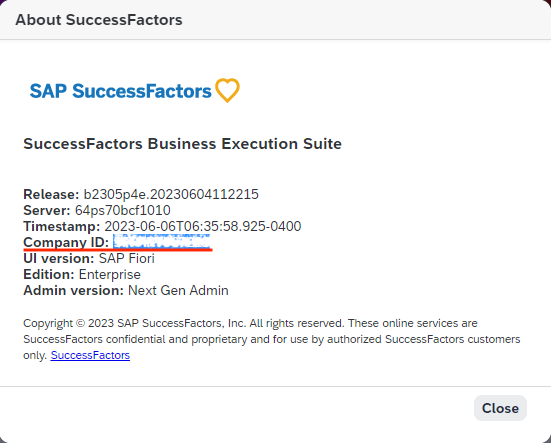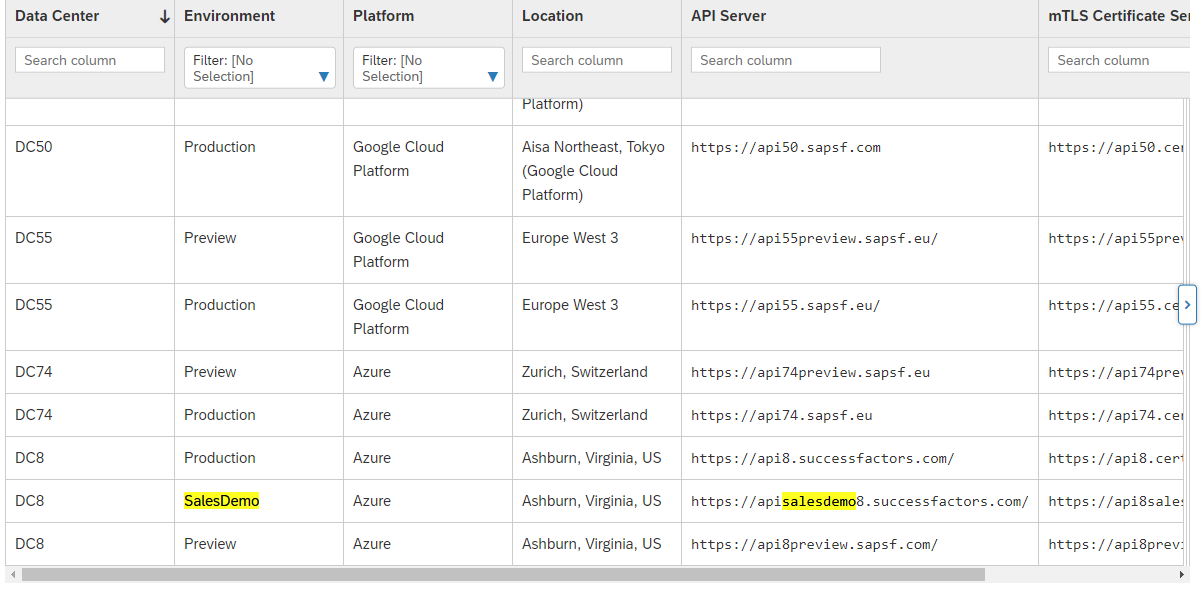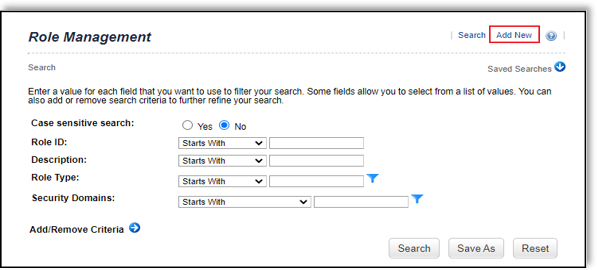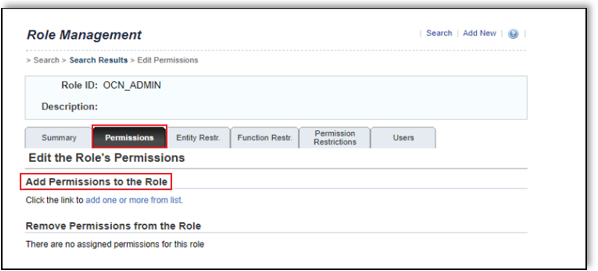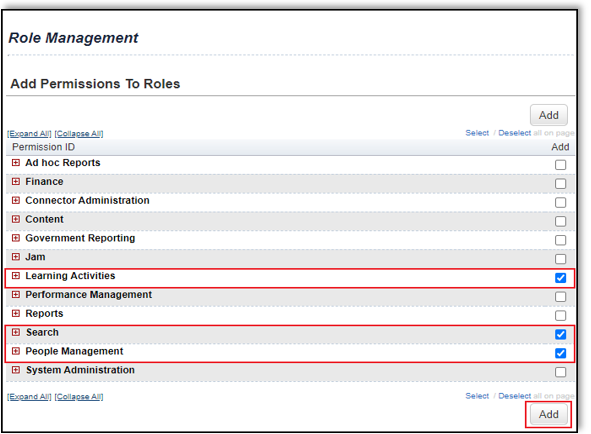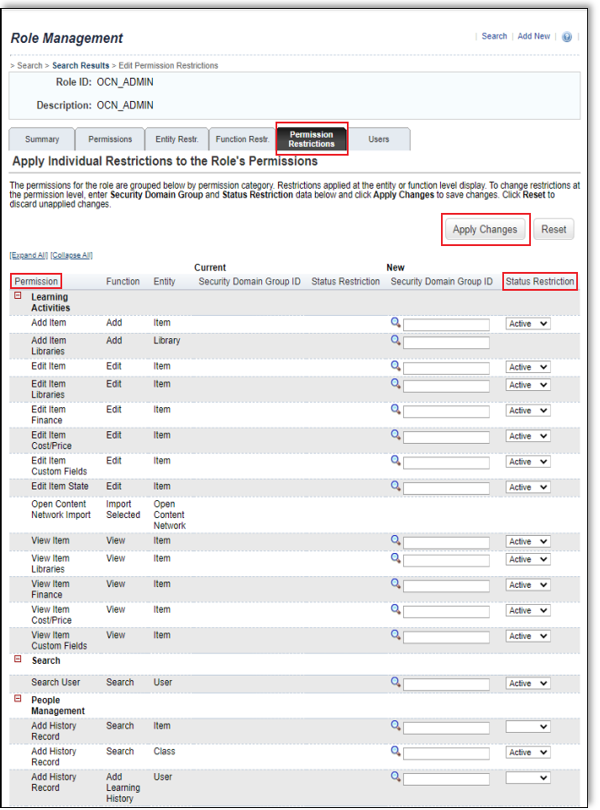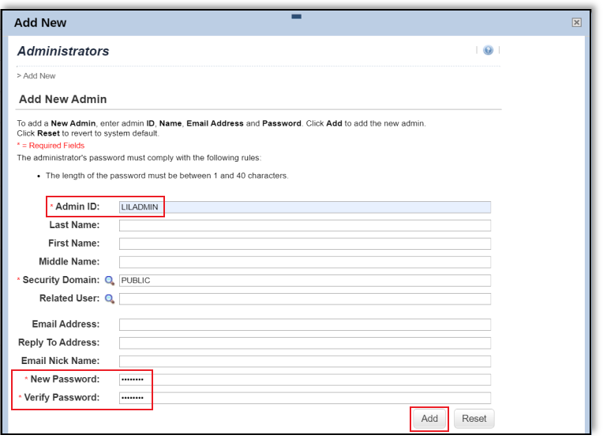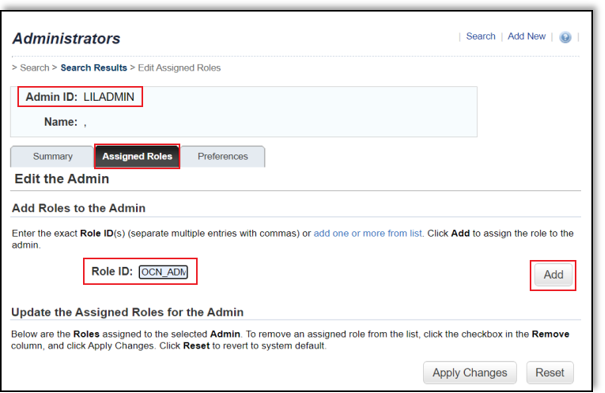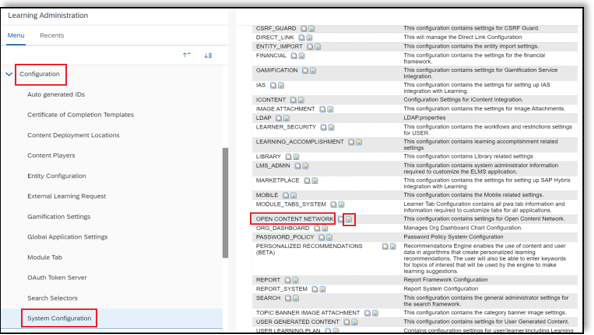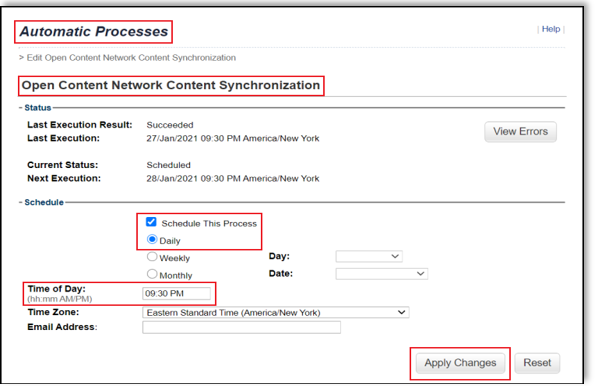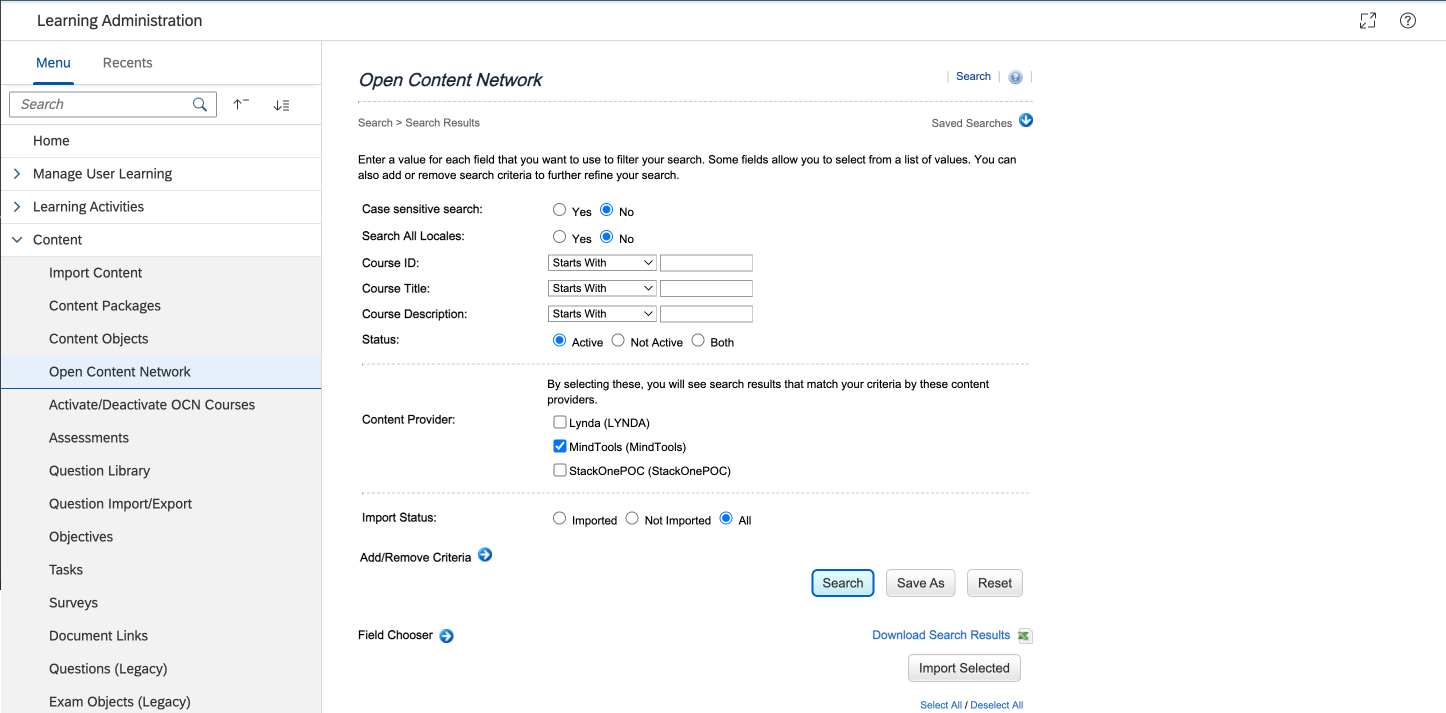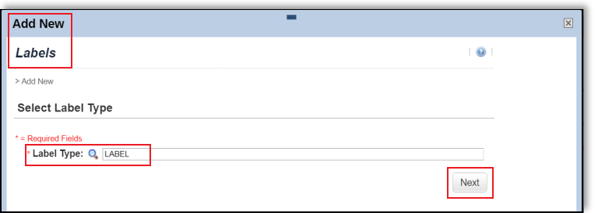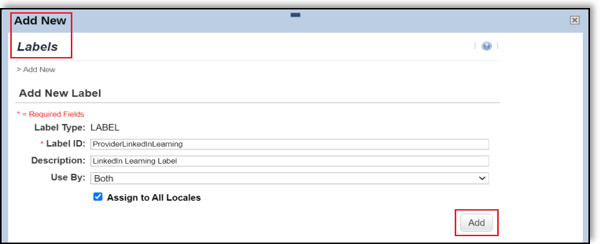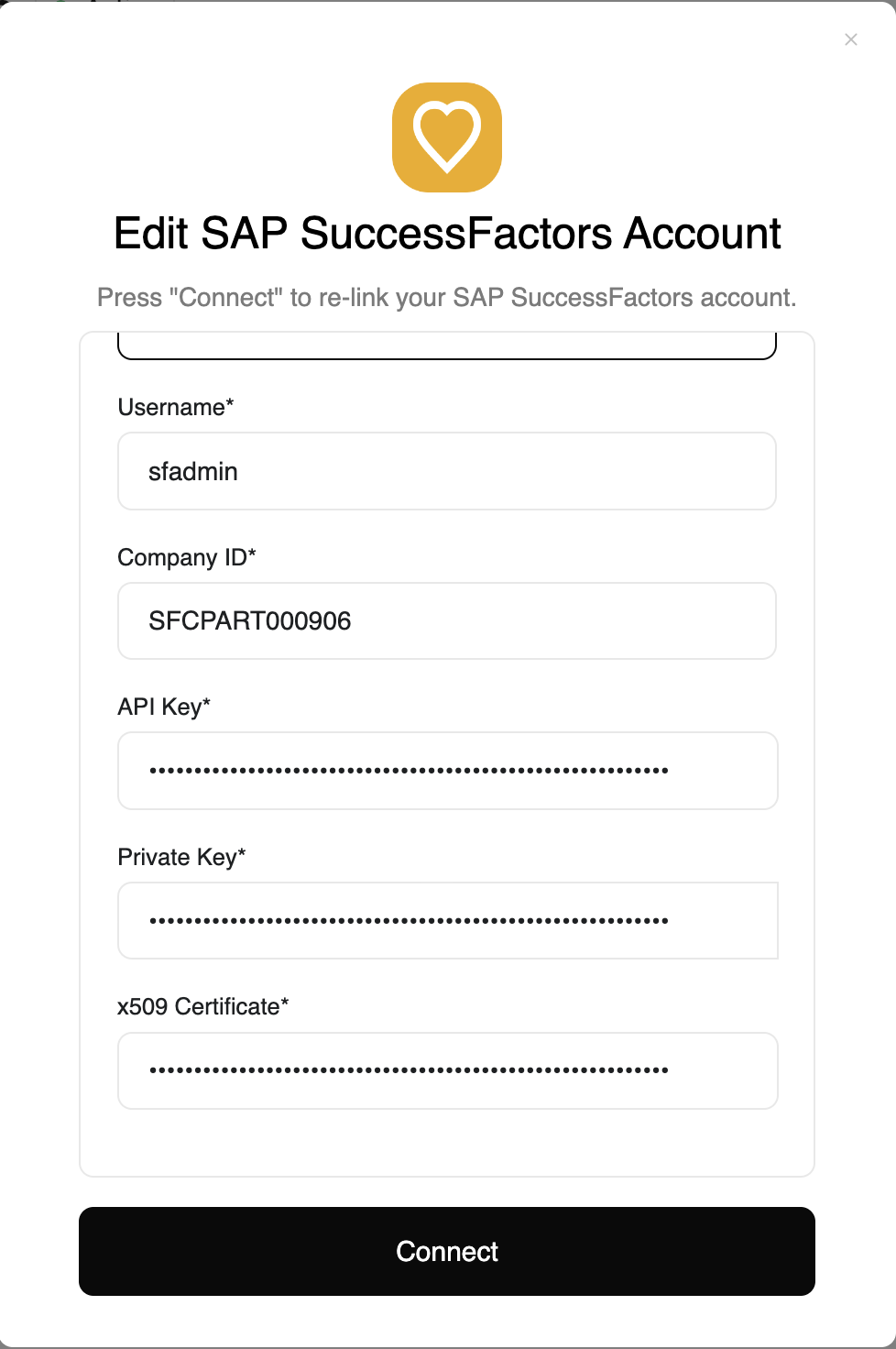Ensure you have Admin privileges for your SAP SuccessFactors account.
- If you are working with an external LXB/LMS to pull data into your SAP instance, you will need to follow the Authentication Flow 1.
- If you are working with an external content provider to pull external content into your SAP instance, you will need to follow the Authentication Flow 2.
Authentication Flow 1: Linking your SAP instance library to an external LXB/LMS to pull data
Locating Credentials
Finding the Learning Hub URL
Log into SAP
Log into SAP SuccessFactors.
Access the Learning Module
Type Learning Administration in the search bar and select the Learning Administration module.
Record Learning Module URL
Look in the browser address bar for the URL and save the address.In this case: https://sfcpart000906.scdemo.successfactors.com/ is the access point.Use this value as the Learning Domain URL value when connecting SAP SuccessFactors to StackOne. Finding Company ID
Open User Modal
Select your profile image in the upper right-hand corner of the screen to open the dropdown modal
Locate Company ID
Within the modal that appears, you will see Company ID. Copy and note down this value. Finding Username and Client Secret
If you are setting up SAP for creating content via OCN, please follow the below steps to create an OCN Admin Role and User and use that username.
Navigate to Administrators Settings Page
From SuccessFactors go to Learning Administration > System Administration > Security > Administrators
Edit Relevant Administrator
Search for the administrator for this integration and click the edit icon.
Note the Relevant Information
Note down the AdminID for this UserActivation.
Generate Client Secret
Click Generate Client Secret and note this down.
Additional Configuration if syncing Skills and Competencies via API endpoints (Optional)
Locating API Server
Find the API Server
SAP uses multiple API server addresses. You will need to look up the API server that corresponds to your tenant domain on this table under the API Server column.For example, if your domain was https://pmsalesdemo8.successfactors.com/ you would search for salesdemo8 in the table. If the server is not listed, you may be able to find it by searching online or contacting your provider for support.Copy the value in the API Server column (remove the final forward-slash /). In this example, the value would be https://apisalesdemo8.successfactors.com.Use this value as the API Server value when connecting SAP SuccessFactors to StackOne. Locating API password
Locate API Password
In the SuccessFactors main instance, navigate to the user management tool.Search for the integration system user and find the password within the user profile.If required you can reset the password by searching Reset User Password in the search bar.Note down the API password for this user.
Authentication Flow 2: Linking your SAP instance library to an external content provider pushing data to your SAP instance.
Finding the Learning Hub URL
Log into SAP
Log into SAP SuccessFactors.
Access the Learning Module
Type Learning Administration in the search bar and select the Learning Administration module.
Record Learning Module URL
Look in the browser address bar for the URL and save the address.In this case: https://sfcpart000906.scdemo.successfactors.com/ is the access point.Use this value as the Learning Domain URL value when connecting SAP SuccessFactors to StackOne. Finding Company ID
Open User Modal
Select your profile image in the upper right-hand corner of the screen to open the dropdown modal
Locate Company ID
Within the modal that appears, you will see Company ID. Copy and note down this value. Additional Configuration Required For Creating Content via Open Content Network
Create New Admin Role and User
Create Admin Role
Add New OCN Admin Role
To create an OCN admin profile in SuccessFactors, take the following steps:Log in to the SuccessFactors Learning Administration environment and go to System Administration > Security > Role Management.Click Add New.In the Role ID field, enter “OCN_ADMIN”.Click Add. Add Correct Permissions
Select Permissions, then click the link under Add Permissions to the Role.Under Add Permissions to Roles, enable Learning Activities, Search, and People Management. Toggle Status Restrictions
Set Status Restriction to “Active” for each activity under Permission Restrictions:
- Add Item
- Add Item Libraries
- Edit Item
- Edit item Libraries
- Edit Item Finance
- Edit Item Cost/Price
- Edit Item Custom Fields
- Edit Item State
- Open Content Network Import
- View Item
- View Item Libraries
- View Item Finance
- View Item Cost/Price
- View Item Custom Fields
- Search User
- Add History Record
Click Apply Changes. Create Admin User
Add New Administrator
To create a system admin user in SuccessFactors, take the following steps:Log in to the SuccessFactors Learning Administration environment and go to System Administration > Security > Administrators.In the upper right-hand corner of the screen, click Add New.In the Admin ID field, enter “OCNADMIN”.Enter a new password in the password fields.Take note of this username (AdminID) as this will be used to connect the account in the StackOne hub.Make sure the user is linked to an integration system user in the main SAP instance as we will require the api password for this user to access skills.Click Add. Assign OCN Admin Role to User
Select the Assigned Roles tab. If this integration is your first SuccessFactors instance, click Edit.In the Role ID field, enter “OCN_ADMIN”, then click Add. Navigate to Property File
In the SuccessFactors Learning Administration navigation menu, select System Administration > Configuration > System Configuration.Find the Open Content Network option in the configuration file and select the Edit (pen) icon. Copy over Provider Config
Scroll to the bottom of the configuration file.Copy and paste the values below into the configuration file:providers[ProviderName].enabled=trueproviders[ProviderName].name=ProviderNameproviders[ProviderName].label=label.u.ProviderNameproviders[ProviderName].baseLaunchUrl=https://www.ProviderRootUrl.comproviders[ProviderName].pricingModel=You can also set additional default values for Learning Items:
defaultValues.itemType[default]=value
-
Go to References > Learning Activities > Item Types > Click Search. Choose an item type.
-
E.g. COURSE or ONLINE. You will need the Item Type ID of your chosen Item Type to replace the
value above.
defaultValues.itemCompletionStatus[default]=value
-
Go to References > Manage Users Learning > Completion Status > Click Search.
-
Choose Completion Status. E.g. COMPLETE or ONLINE-COMPL. You will need the Completion Status ID of your chosen Completion Status to replace the
value above.
Completion Status MUST be linked to the Item Type. You may need to enable additional columns in the search results table in order to find the correct completion status.
-
Go to System Admin > Security > Security Domains > Click Search.
-
Choose the default security domain where the item should be created. This will control which admin users have access to the items created.
defaultValues.markCompleteOnLaunch[default]=value
- This should be set to ‘false’ if the provider posts completion information back to SuccessFactors, items will not be marked as complete as soon as a user clicks on them.
defaultValues.autoImportOCNCourseEnabled[default]=value
- This should be set to true either for all providers or for a specific provider, to automate the import of content. If set to true, the content will be automatically imported into SuccessFactors when it is published in the provider.
If you want any of the above configurations to be specific to a provider, you can add provider_name instead of default in the property name - e.g. defaultValues.itemType[provider_name]=value
Set Up OCN Content Synchronization Automatic Process
To automate the OCN content sync process, take the following steps:
Schedule Synchronisation Process
In the SuccessFactors Learning Administration navigation menu, select System Administration > Automatic Processes.Select Open Content Network Content Synchronization.Select the Schedule This Process check box.Select the Daily radio button.In the Time of Day field, specify a time outside of peak usage hours.Click Apply Changes. Importing Content
If you have enabled the autoImportOCNCourseEnabled property in the OCN property file, you can skip the manual import step below.
Search OCN Content
In the SuccessFactors Learning Administration navigation menu, select Content > Open Content Network.Select the content provider you wish to import content from and click searchTick the import box for all content you wish to importSelect Import SelectedNote: All content updates via the OCN Network will update the imported content once the synchronization process has run without the need for manual updarte or import. Create a Provider label
To create a LinkedIn Learning label, take the following steps:
Create New Label
In the SuccessFactors Learning Administration navigation menu, select References > Manage Labels > Labels.Click Add New.In Label Type, enter “LABEL” and click Next. Add Label Config
In Label ID, type “ProviderLinkedInLearning”.In Description, type “LinkedIn Learning Label”.In Use By drop down, select “Both”.Select Assign to All Locales.Click Add. Add Locales
Select the Locales tab.To add a locale to the LinkedIn Learning label, enter the locale (i.e., “Japanese”) in the Active Locale ID field and “LinkedIn Learning” in the Label Value field, then click Add.For each Active Locale ID, enter “LinkedIn Learning” (if the Label Value field is not already populated).Click Apply Changes. Note Content Provider Name
Note Provider Name
This will be used when connecting the account in the StackOne hub. Ensure this matches the provider name which has been used in the OCN property file.
SSO Configuration
Proper SSO (Single Sign-On) configuration is essential for the SAP SuccessFactors integration to work correctly. The configuration ensures that users are properly identified and matched between your platform and SAP SuccessFactors.
Configuration Options
The SSO configuration should use the following approach:
Custom Field Configuration
Set Custom Field
Configure a custom field called lms_user_id and set it to the UserID field value.
Verify Custom Field
Ensure the lms_user_id custom field is properly populated and accessible through the SSO configuration.
Important Notes
Correct SSO configuration is essential for ensuring the integration works as expected. Incorrect configuration may result in:
- Users not being properly identified
- Learning records not being correctly attributed
- Authentication failures
Customer Responsibility: You should work closely with your content provider to ensure the SSO configuration follows one of the recommended approaches above. The content provider should validate that the configuration meets the integration requirements.
Additional Configuration if syncing Skills and Competencies via API endpoints (Optional)
Locating API Server
Find the API Server
SAP uses multiple API server addresses. You will need to look up the API server that corresponds to your tenant domain on this table under the API Server column.For example, if your domain was https://pmsalesdemo8.successfactors.com/ you would search for salesdemo8 in the table. If the server is not listed, you may be able to find it by searching online or contacting your provider for support.Copy the value in the API Server column (remove the final forward-slash /). In this example, the value would be https://apisalesdemo8.successfactors.com.Use this value as the API Server value when connecting SAP SuccessFactors to StackOne. Locating API password
Locate API Password
In the SuccessFactors main instance, navigate to the user management tool.Search for the integration system user and find the password within the user profile.If required you can reset the password by searching Reset User Password in the search bar.Note down the API password for this user.
Linking your Account
Enter the Details
In the modal, enter the gathered details and proceed by clicking the Connect button. Useful Links

